At Portimao, a closer look at some of the finer details and differences between prototypes from the same factory was possible. For example, Enea Bastianini may be riding a Ducati that was developed last year, but he has the GP22 swingarm. Meanwhile, at Honda, Takaaki Nakagami is the only HRC rider with a different chassis than his teammates. At Aprilia, Lorenzo Savadori developed an automated Ride Height Device for the rear, as for the swingarm of the KTM Red Bull is different from that of the KTM Tech3. And at Suzuki, Joan Mir uses small ergonomic features that are different from those of Alex Rins' bike.
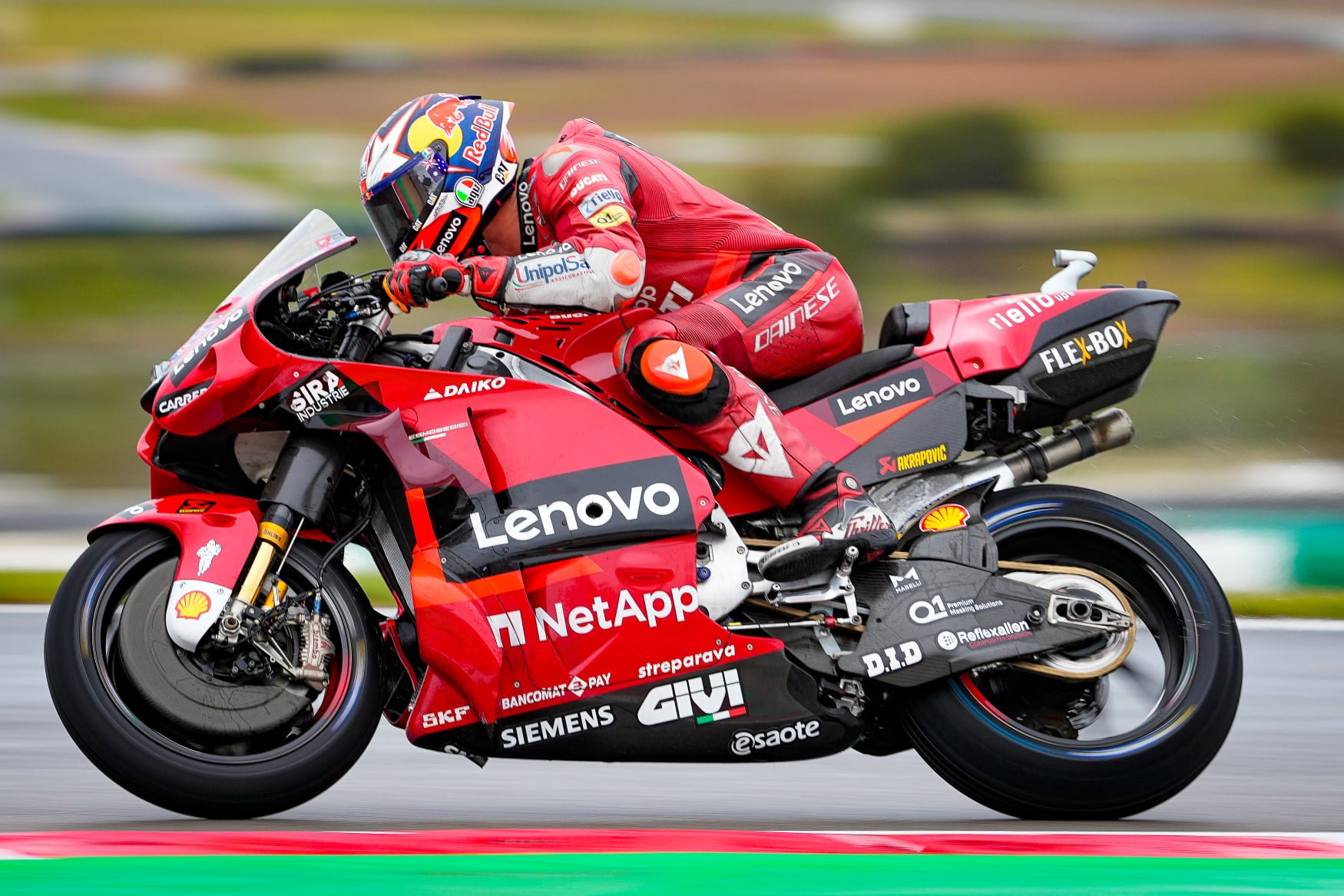
The Ducati GP22s have a few different characteristics from the GP21s. The easiest to spot is the different aerodynamics, followed by the exhausts developed for the 2022 engine that only Pramac Racing drivers, Johann Zarco and Jorge Martin, are now using after the official driver duo, Jack Miller and Pecco Bagnaia, reverted to the 2021 exhausts.
But there is one detail which shows that Ducati is helping Enea Bastianini as much as it can with his GP21, he who has won 2 Grand Prix this season.
If we closely observe the swingarm on Jack Miller's prototype, which is the one developed specifically for 2022, at the area where the chain passes through the center of the swingarm just below his foot, we notice that just in Below where Jack Miller's foot is there is a small area where the swingarm carbon sits a little further forward (just to the left of the DID sticker). This is the area that allows you to tell the difference between the 2021 swingarm and the 2022 swingarm
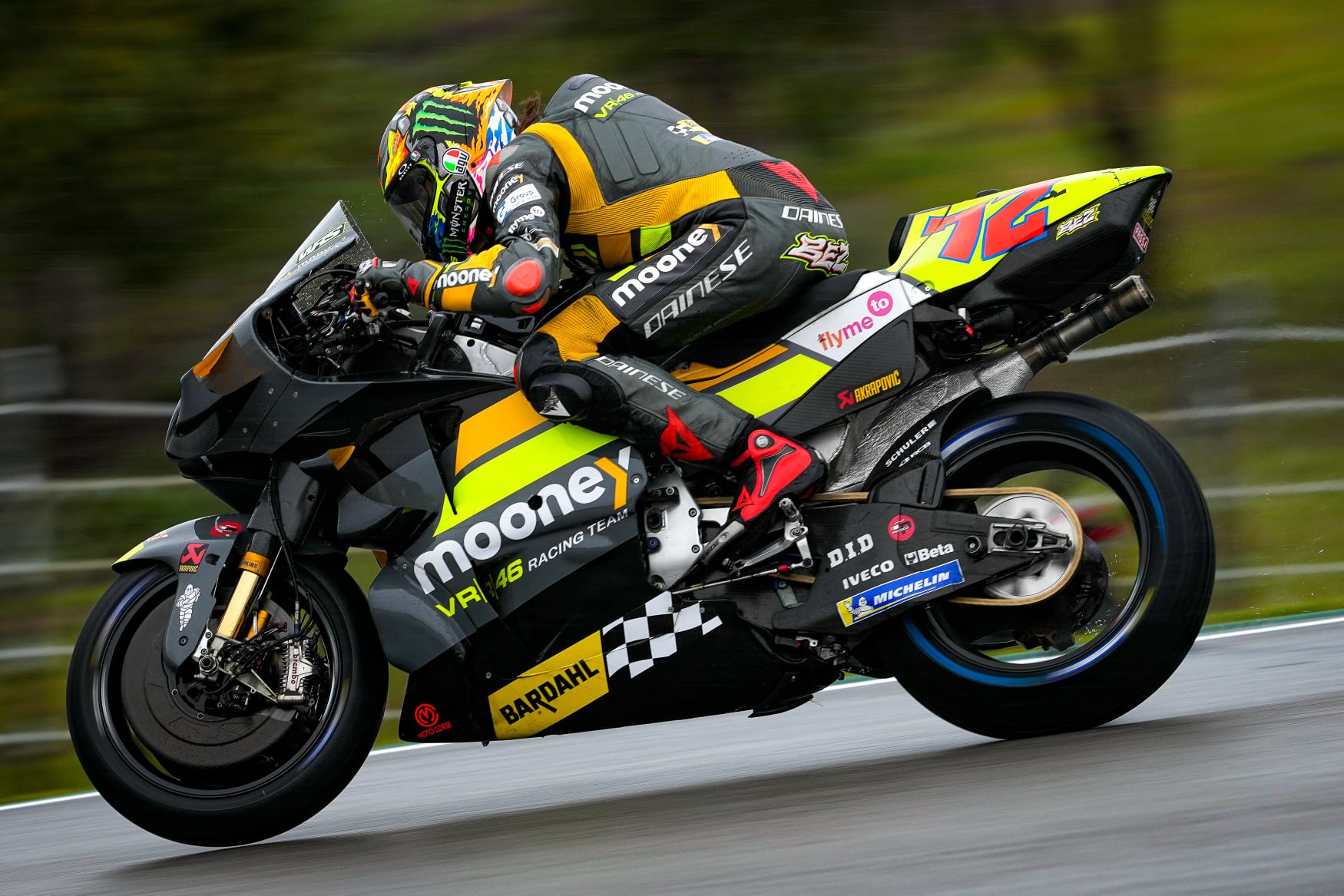
In this photo, we see Marco Bezzecchi in action on his GP21. The Italian rider uses the 2021 swingarm because this small section of carbon is different, compared to the GP22.
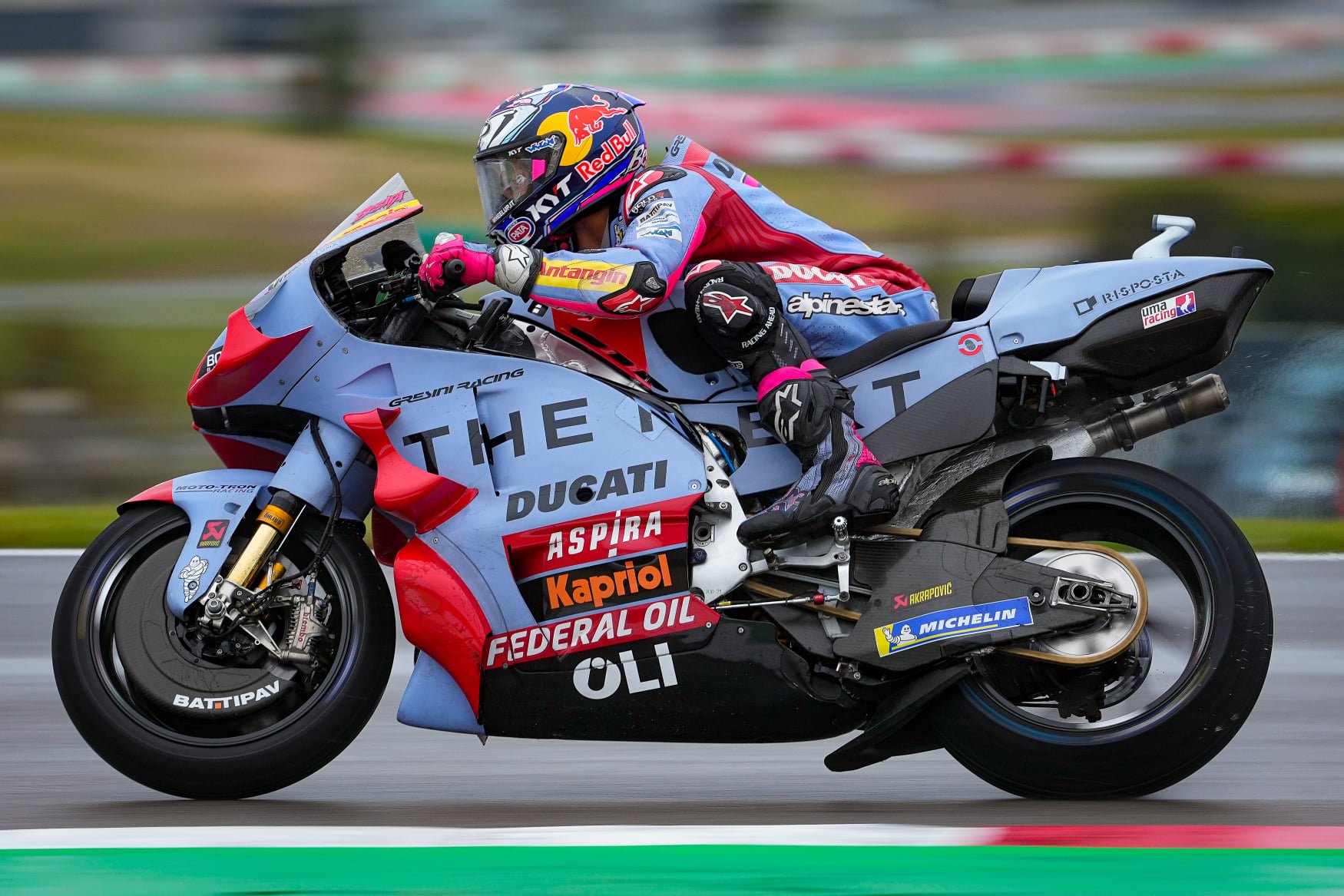
What's interesting is that when we scrutinize Enea Bastianini's GP21, it appears that he too is using the 2022 swingarm like the other riders equipped with the GP22.
This proves that, even with Enea Bastianini playing in a satellite Ducati team, the factory is providing as many new parts and support as possible to the rider and his GP21, who have already won 2 Grand Prix.
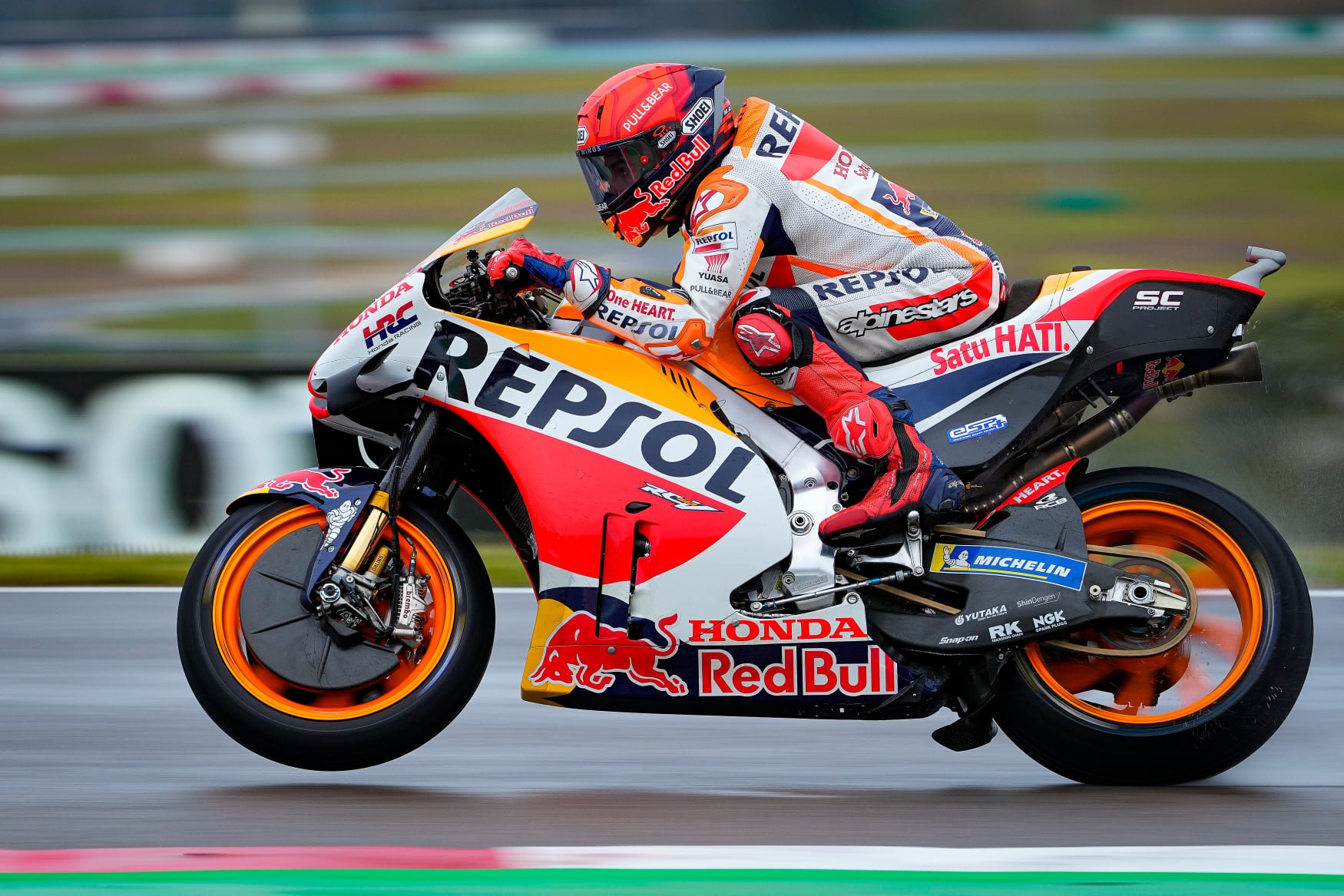
The 213 Honda RC2022V is still in its infancy, extremely new and in the very early stages of development, and it's clear that HRC engineers are still testing various developments to see which ones have more potential than others.
The chassis mounted on Marc Marquez's prototype is the standard 2022 Honda chassis. But at Honda, Takaaki Nakagami has been using something completely different since the start of the season.
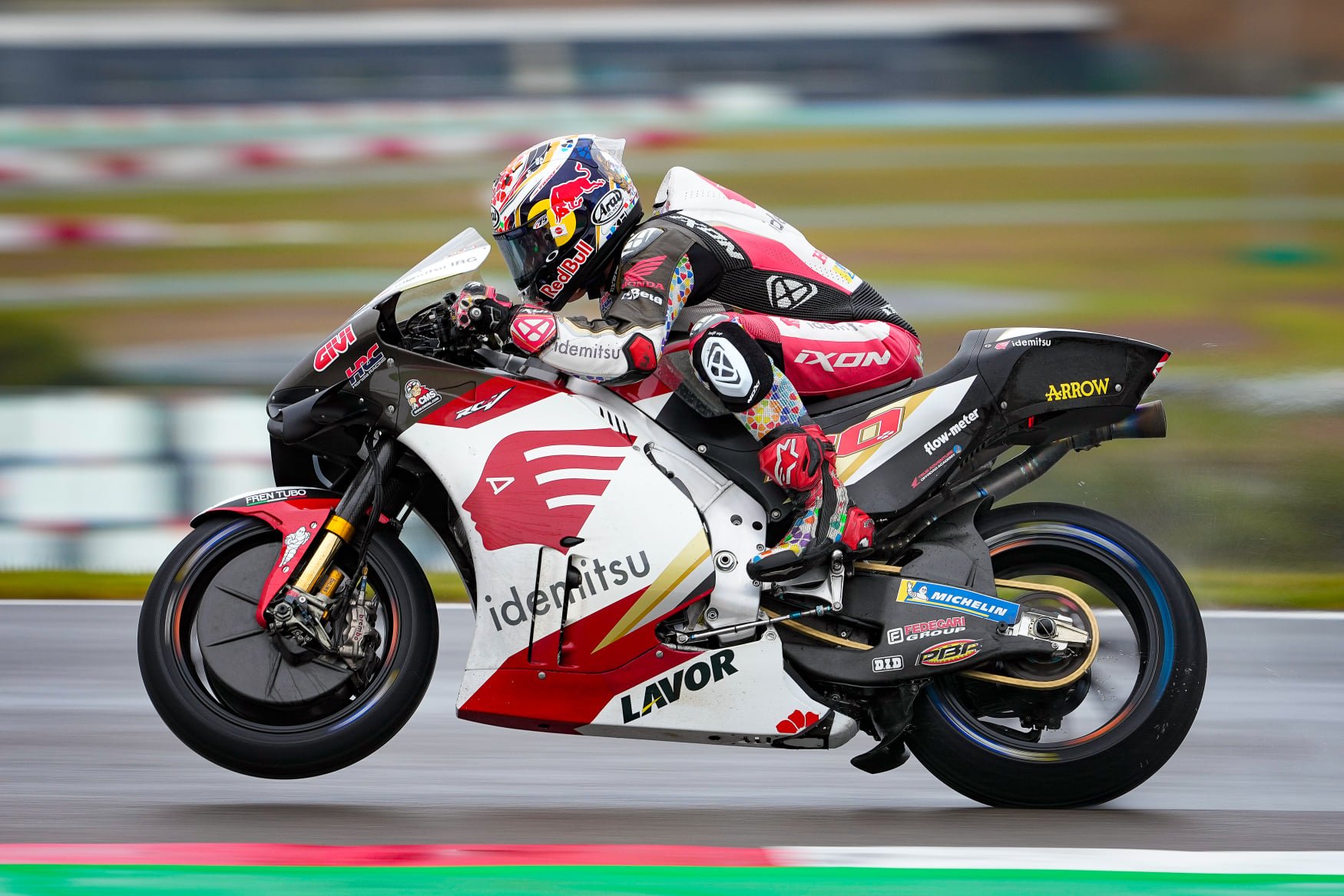
On Takaaki Nakagami's machine, seen here, it is clear that the chassis is different from what the other three Honda riders use.
The thicknesses and widths of beams are very different. There is a large horizontal weld on the main beam which is also not visible on the prototype used by Marc Marquez. So it appears that Takaaki Nakagami has been tasked with much of Honda's development work this year as the other riders set to work on the standard package given to them. Only time will tell if other Honda riders end up using this chassis, but for now only the Japanese rider is using it.
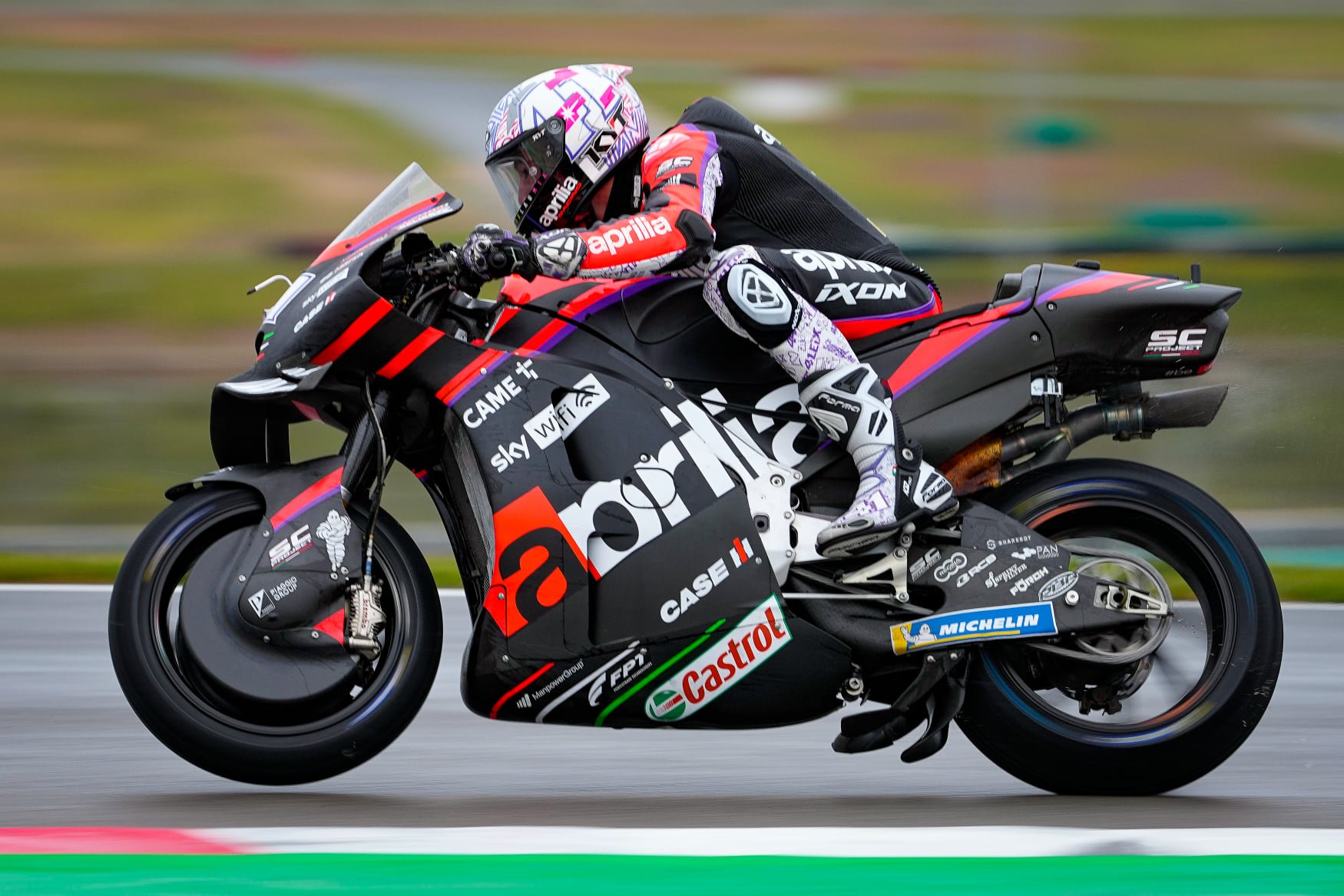
The Aprilia RS-GP has improved a lot between last year and this year and the engineers at the Noale factory are still working on it trying to improve it every time they go out on the track.
This weekend,he test rider Lorenzo Savadori had something new on his RS-GP around the fork area. It appears to be an evolution of the Ride Height Device from what they were developing last year.
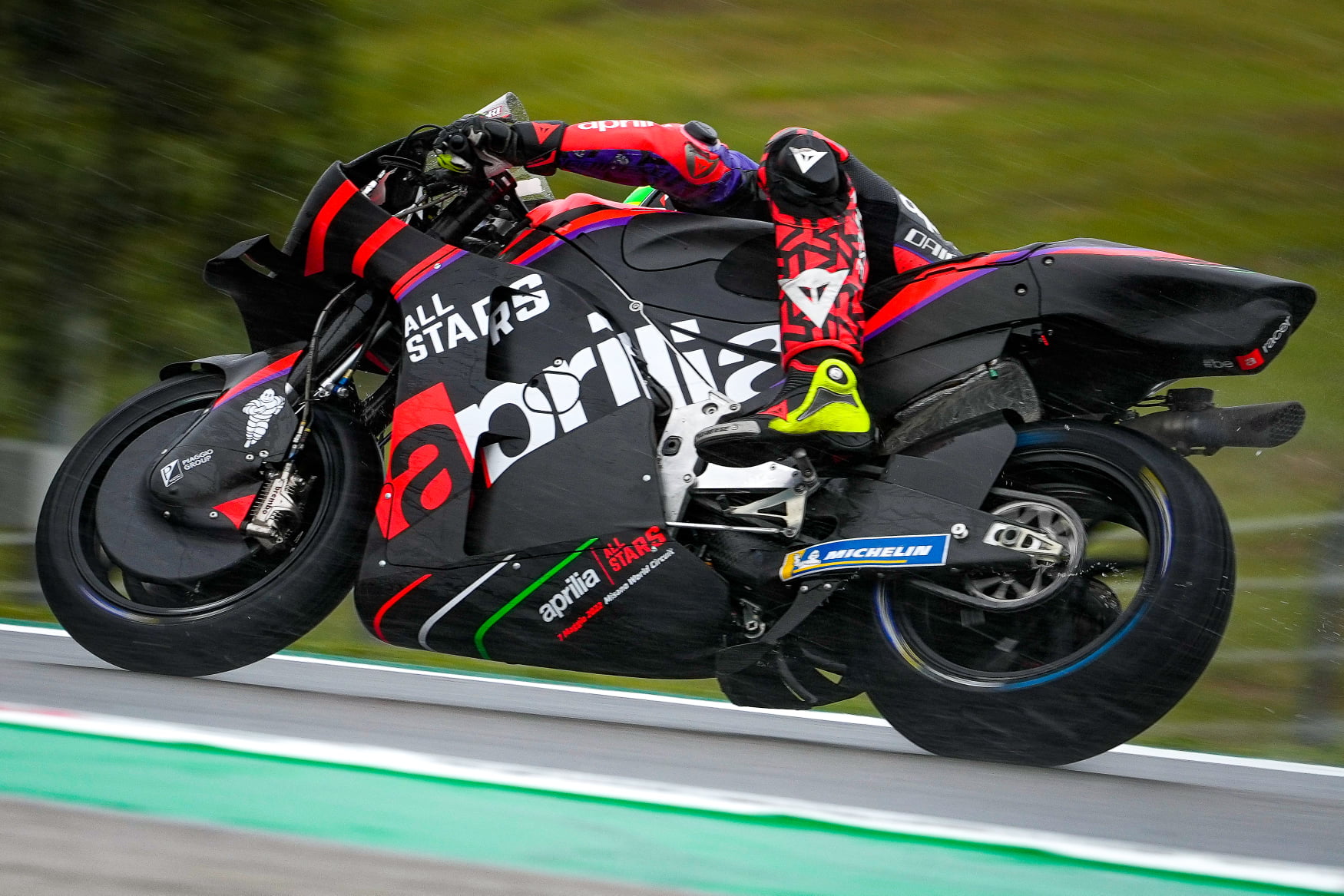
At the fork area of Lorenzo Savadori's prototype, the silver rod just behind the fork leg is connected to hydraulic lines, and then there's a hidden reservoir behind the front fairing that probably has a piston inside of a cylinder to activate the device.
It appears that riders operate a lever on the handlebars as they enter the turn to “pre-arm” the system. Then, when the fork extends to its full length coming out of the corner, it automatically triggers the rear of the bike to lower, which is very nifty.
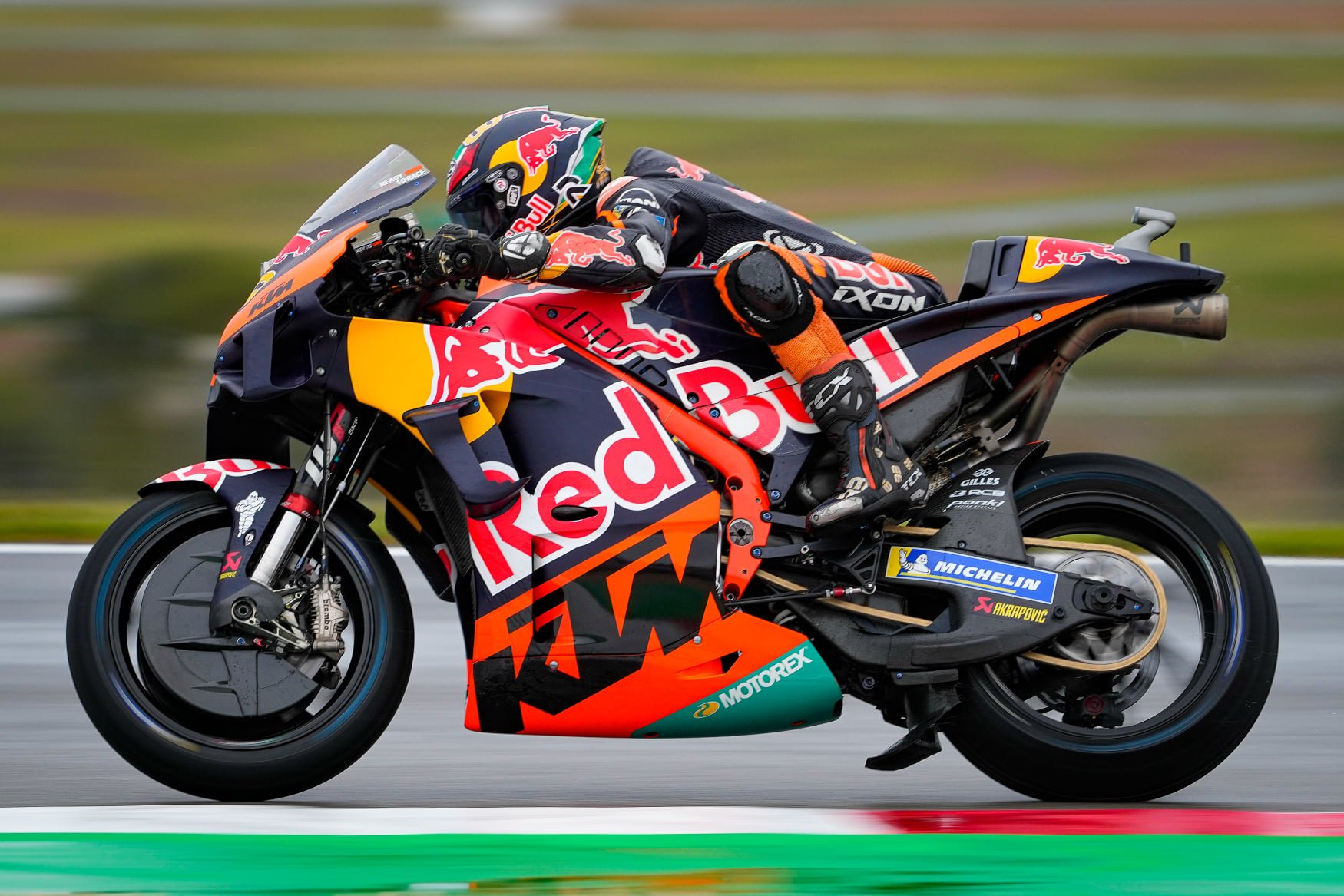
The KTM RC16 has also evolved this season. Many changes have been made in terms of electronics, completely changing the way the bike reacts. But the electronic changes go hand in hand with some physical modifications.
A new much larger aerodynamic package is fitted this year and the RC16 has a new swingarm which has seen the overall effect less critical at the front and riders feel like they are less on the limit with the front end .
While the Tech3 duo also have the new aero package, one thing they don't benefit from yet is the new swingarm, seen here on Brad Binder's prototype.
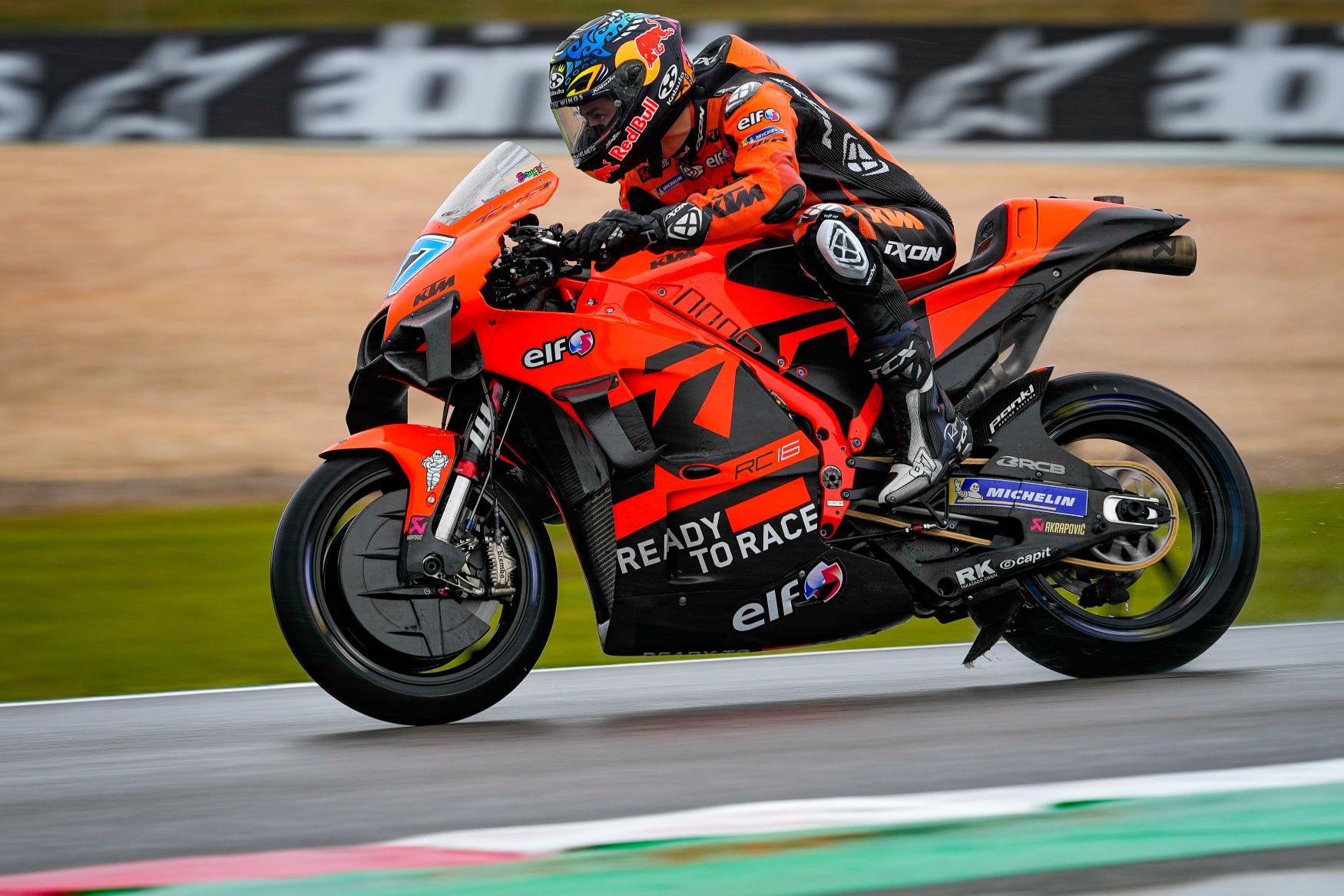
On the KTM RC16s of Rémy Gardner and Raul Fernandez, we actually find the old swingarm, identifiable because of its more angular lower edge and also the hole which is just to the left of the RK sticker.
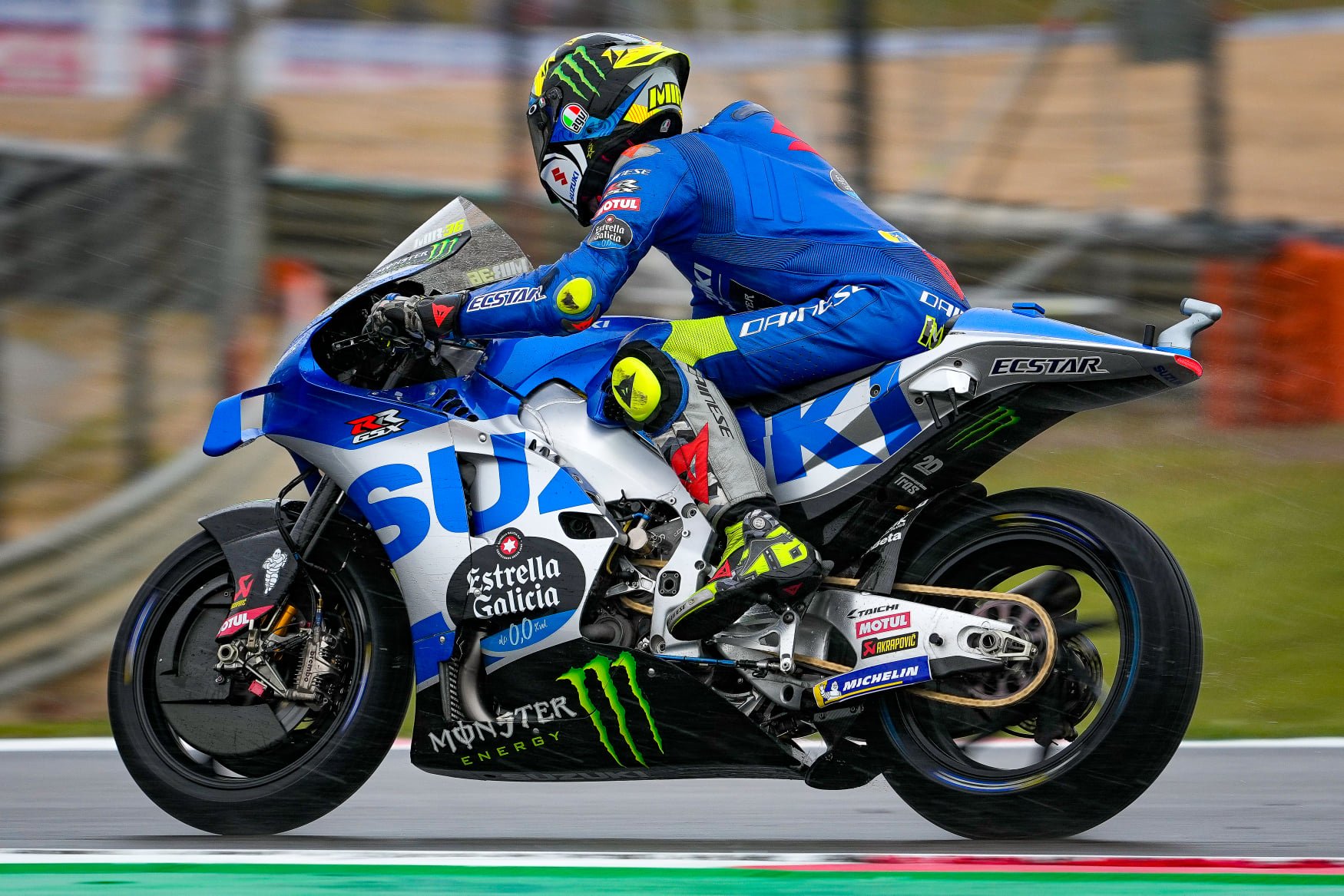
The two Suzukis still look the same overall. The only visible difference is the fairing part at Joan Mir's knee, located just in front of it to better hold himself in position with his legs while braking so that he relieves some pressure on his arms. It also helps him rock the Suzuki from side to side, giving his legs something to hold on to.
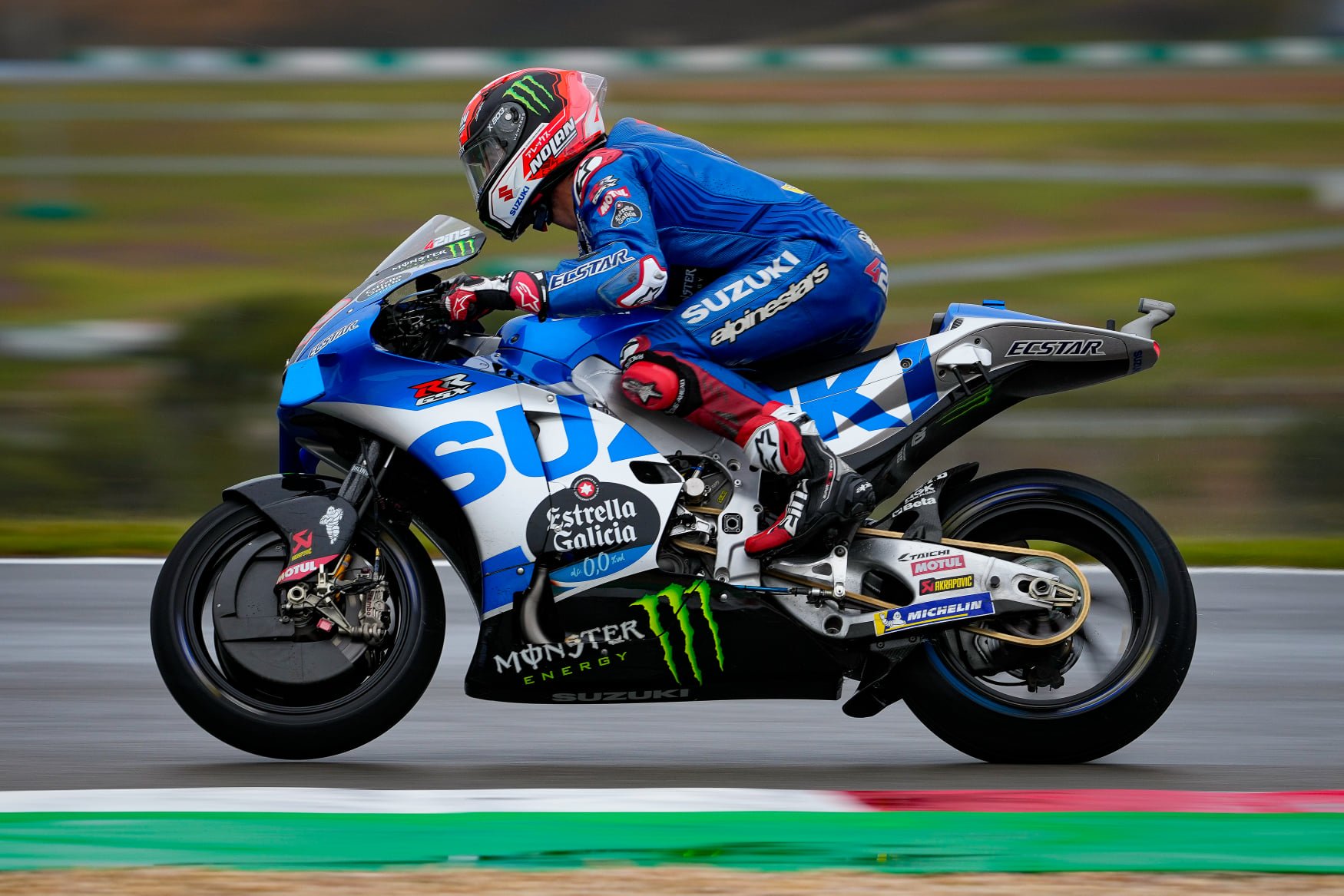
Alex Rins doesn't use them. He tried them in a test over a year ago. He just felt he didn't need it and preferred to do without it.
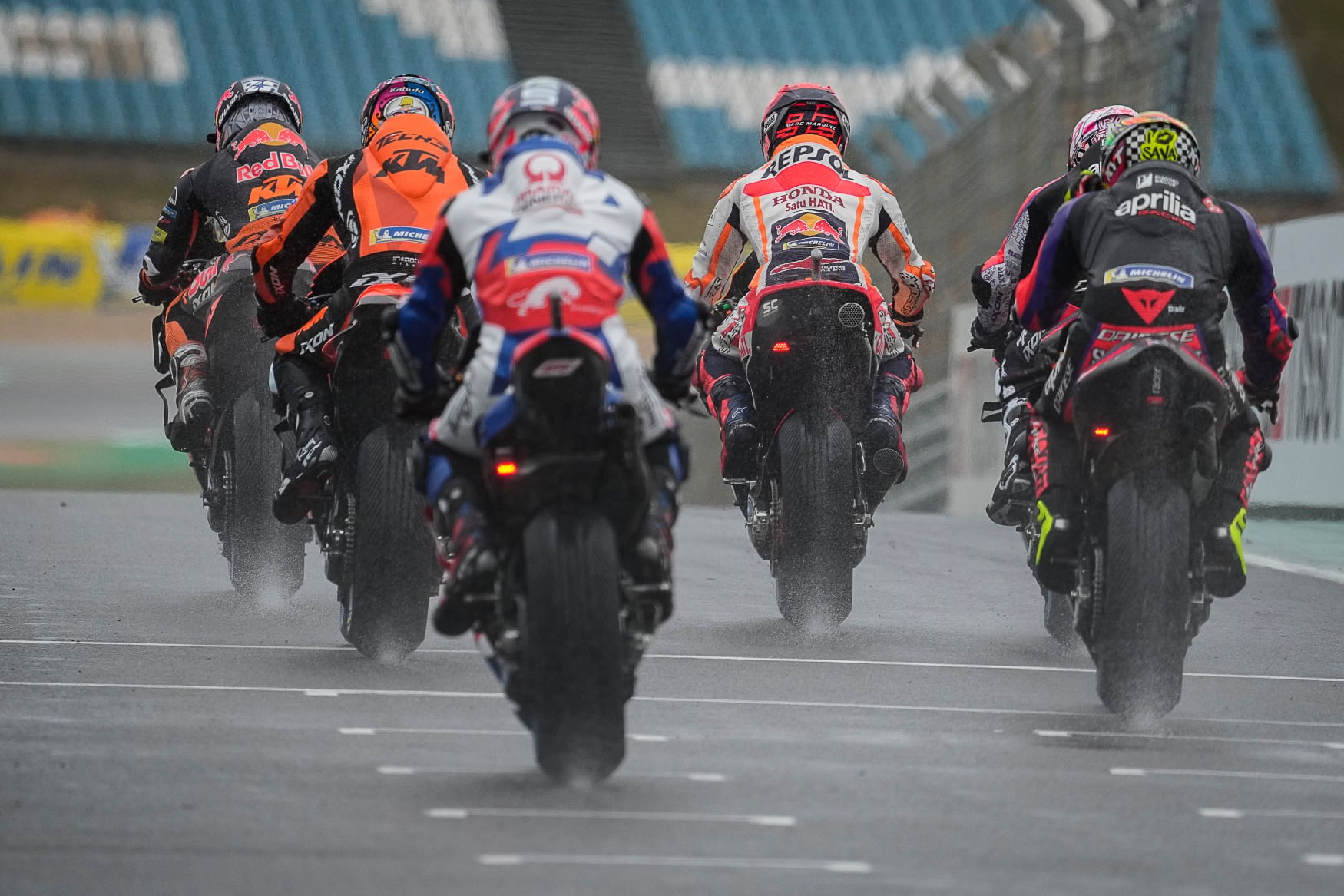
Photo credit: Dorna Sports



